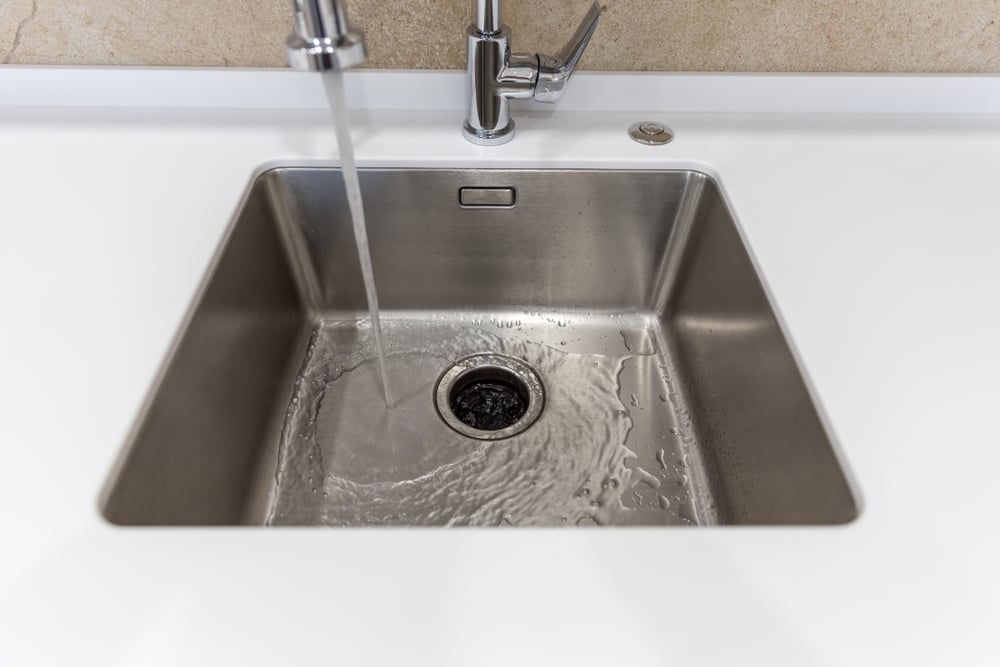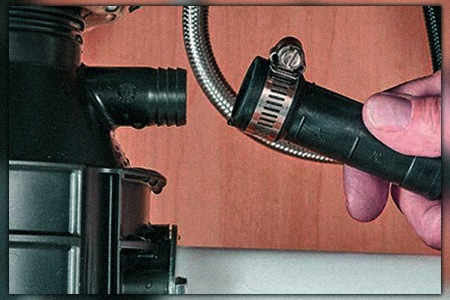Helpful Techniques for Repairing a Dripping Garbage Disposal
Helpful Techniques for Repairing a Dripping Garbage Disposal
Blog Article
They are making a few great points regarding The Handy Guide To Fixing Your Garbage Disposal Leaking overall in the content underneath.

Garbage disposals are important kitchen devices that assist in getting rid of food waste efficiently. Nonetheless, a leaking waste disposal unit can be a frustrating and messy problem to deal with. Luckily, lots of leaks can be fixed conveniently with a few easy steps. In this article, we will certainly talk about just how to fix a dripping waste disposal unit properly.
Introduction
Garbage disposals are mounted under kitchen area sinks and are developed to shred food waste into smaller pieces, permitting it to pass through the pipes system conveniently. While these tools are normally dependable, leaks can occur in time due to wear and tear, loosened links, or damages to the unit.
Step-by-Step Overview to Fixing a Dripping Waste Disposal Unit
Shut off the Power
Before trying any type of repair work, ensure that the power to the waste disposal unit unit is turned off to avoid the threat of electrical shock.
Find the Leakage
Determine the precise area of the leak and establish the reason
Tighten Links
Utilize a wrench to tighten up any type of loose connections between the disposal system and the pipes system.
Replace Seals or Gaskets
If the leak results from used seals or gaskets, remove the old parts and change them with brand-new ones.
Patching Fractures or Openings
For splits or openings in the disposal device, usage epoxy or an ideal patching product to seal the damaged location.
Recognizing the Source of the Leak
Prior to attempting to repair a leaking waste disposal unit, it is essential to recognize the source of the leakage. This can typically be done with visual assessment or by carrying out straightforward examinations.
Visual Inspection
Check the garbage disposal device meticulously for any signs of water leakage. Pay attention to locations around seals, gaskets, and link factors.
Checking for Leakages
One method to check for leakages is by running water via the disposal system and looking for any noticeable indications of leak.
Usual Sources Of Leaks in Waste Disposals
Worn Seals and Gaskets
Seals and gaskets play an important role in avoiding water from leaking out of the waste disposal unit. Over time, these elements can deteriorate, bring about leaks around the disposal system.
Loose Connections
The links in between the garbage disposal and the pipes system can become loosened with time, triggering water to leakage out throughout operation.
Fractures or Openings in the Disposal Device
Physical damages to the garbage disposal, such as fractures or holes in the real estate, can additionally cause leakages.
Devices and Products Needed for Fixing a Leaking Garbage Disposal
Before beginning the repair work process, collect the necessary devices and products, consisting of a screwdriver, adjustable wrench, plumbing technician's putty, replacement seals or gaskets, and epoxy or patching material for fixing fractures or holes.
Testing the Waste Disposal Unit After Repair Service
Once the fixing is total, evaluate the waste disposal unit by running water with it to ensure that the leakage has been resolved.
Preventive Upkeep Tips to Stay Clear Of Future Leakages
To stop future leakages, it is essential to do routine maintenance on your garbage disposal. This consists of keeping it clean, preventing putting non-food things or hard objects down the disposal, and regularly looking for leakages or various other concerns.
Conclusion
In conclusion, repairing a leaking garbage disposal is a fairly straightforward process that can be completed with standard devices and products. By complying with the steps outlined in this article and exercising preventative maintenance, you can keep your waste disposal unit in good working problem and avoid expensive fixings in the future.
What to Do About a Leaking Garbage Disposal
A leaking garbage disposal often goes unnoticed until you confront a sopping cabinet, a foul-smelling puddle, or an audible drip-drip-drip from the unit. The fix can be frustrating, too, because the leak can stem from a number of components in the system. Fortunately, with a little sleuthing, you can zero in on the leak and—depending on the exact location—stop the icky oozing and repair the component that caused it. Worst case scenario, if it turns out that the garbage disposal must be replaced, installing a new one is a reasonable do-it-yourself task for those with basic plumbing skills. Read on to keep the cash you’d otherwise hand over to a pro.
Prepare to find the leak
Prior to testing the garbage disposal for leaks, unplug it at the wall outlet and turn off the power from the breaker box to prevent electrical shock. Then insert a watertight sink stopper into your sink drain and wipe the unit dry with a clean cloth. In any handy container, mix a few drops of food coloring into a few cups of water, and pour the dyed water onto the sink stopper to help you locate the leak.
Investigate the source
the top, where the disposal meets the sink drain the side, where the dishwasher hose or main drain pipe connects to the disposal or the bottom of the unit Inspect each of these locations while gliding a light-colored rag over the unit; the dyed water will readily show on the rag and reveal the location of the leak. If a leak isn’t immediately apparent, remove the sink stopper and pour a few more cups of dyed water down the sink drain, then check for leaks again. Leaks near the top of the unit are more likely to show themselves while the sink is plugged, while side and bottom leaks are more noticeable while the sink is unplugged.
The metal sink flange that sits directly inside the sink drain is typically sealed around the top with plumber’s putty (a clay-like sealant) and then secured from under the sink with bolts. If the plumber’s putty deteriorates, or the bolts loosen, the flange can no longer form a watertight seal between the sink drain and the disposal—which could cause a leak at the top of the unit.
To reseal the leaky flange, you must first detach the garbage disposal. Start by loosening the screws securing the main drain pipe to the disposal, then loosen the screws in the metal clamp securing the dishwasher hose to the disposal and detach the drain pipe and dishwasher hose from the disposal. Loosen the screws in the mounting ring that connects the disposal to the metal mounting assembly beneath the sink, then pull down the disposal and carefully set it on a clean, dry surface. Loosen the bolts in the mounting assembly with a wrench, then pull down the mounting assembly and set it near the disposal.

I'm certainly very drawn to The Handy Guide To Fixing Your Garbage Disposal Leaking and I hope you enjoyed the new page. Sharing is good. You won't know, you will be helping someone out. We cherish reading our article about Garbage Disposal Leaking From Bottom.
Suggested Site Report this page